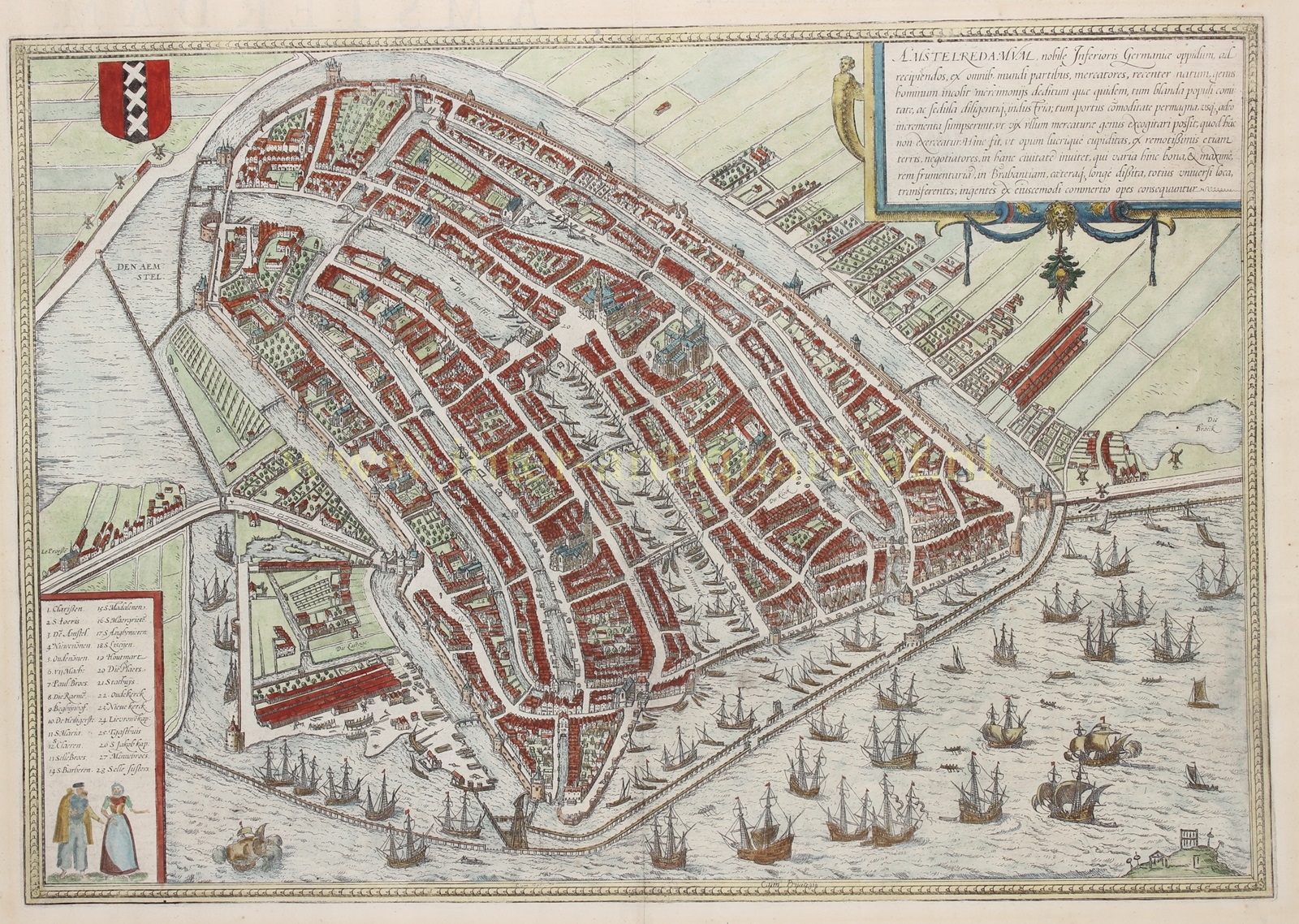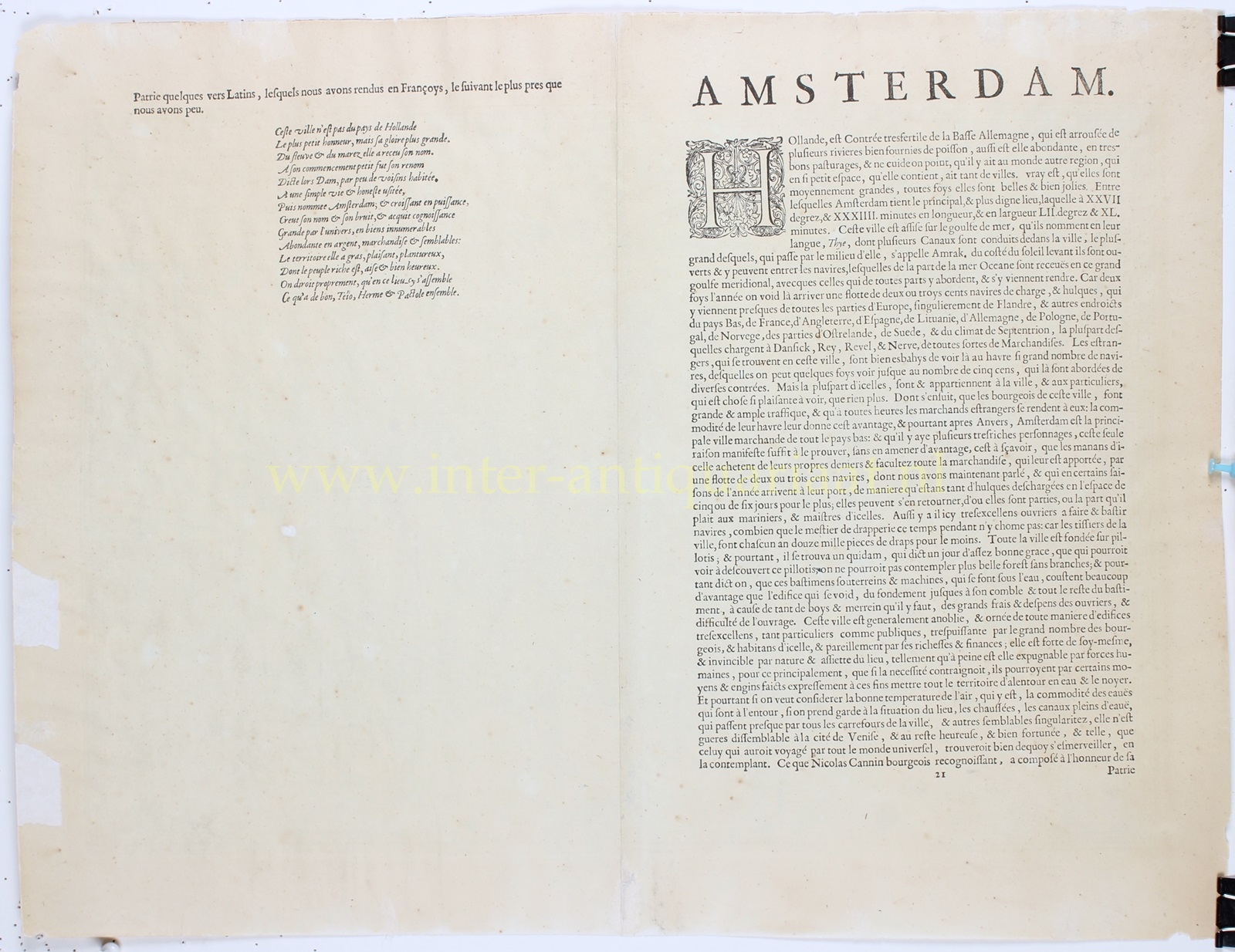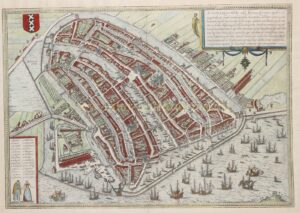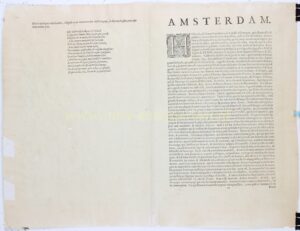16TH-CENTURY AMSTERDAM
“Amstelredamum, Nobile Inferioris Germaniae Oppidum,” copper engraving first introduced to the market by Georg Braun and Frans Hogenberg as part of their townbook “Civitates Orbis Terrarum”, here in a second edition from 1618-1657. Coloured by a later hand. Size (print) approx. 34 x 49 cm.
The Civitates Orbis Terrarum was the first townbook ever published. Although it had no true predecessors, the work proved to be in demand as the social, political, and economic life of that period unfolded in the cities. It became one of the bestsellers of the late sixteenth century. The six parts that comprised the work were published between 1572 and 1618; however, only the first part mentions the above title. Georg Braun (1541-1622), canon of the Cologne Cathedral, wrote the preface for the first five volumes and also the accompanying text on the back of the maps and town views. Much of the material for this townbook originated from the Antwerp cartographer Abraham Ortelius, who’s Theatrum Orbis Terrarum, first published in 1570, served as a model in several respects for the Civitates.
Simon van den Neuvel (Novellanus), Frans Hogenberg, and (his son?) Abraham Hogenberg engraved the copperplates based on ‘made to order’ drawings by, among others, the Antwerp painter Joris Hoefnagel, his son Jacob Hoefnagel, and Heinrich Rantzau. The map of Amsterdam is copied from a map by Cornelisz Anthonisz. from 1544. This was the only available map in the years when the first editions of the Civitates were published. However, in later editions, the publishers had access to a new map of Amsterdam made in 1597 by Pieter Bast.
In many cases, as with the map of Amsterdam, the prints were enlivened by adding human figures. This served a dual purpose: not only did it provide the opportunity to show the habits and clothing of the inhabitants, but it also aimed to prevent the Ottomans from using city views during their conquests, as Islam prohibits the depiction of persons.
Literature: “Kaarten van Amsterdam 1538-1865,” Marc Hameleers, no. 7 (2nd edition).
Price: Euro 1,450,-





